Ask a question from expert
Strategic Leadership & Change Strategies for Employee's Problems
22 Pages7575 Words324 Views
Added on 2021-07-14
About This Document
2 Strategic leadership & change Table of content Part A 3 Question 1: 3 Question 2: 4 Question 3: 6 Question 4: 7 Question 5: 9 Part B 11 Abstract 11 Introduction 11 Leadership qualities utilize to increase employee's performance 12 Leadership styles utilized with 38 employee's difficulties along with justification: 13 Change strategies, along with the reason for motivating improvements, conduct 14 Strategic thinking and tools utilized to undertake changes swiftly and successfully 16 Strategies utilized to ensure effective and efficient selection 17 Recommendations 18 Conclusion 19 Reference list 20
Strategic Leadership & Change Strategies for Employee's Problems
Added on 2021-07-14
BookmarkShareRelated Documents
Strategic leadership & change
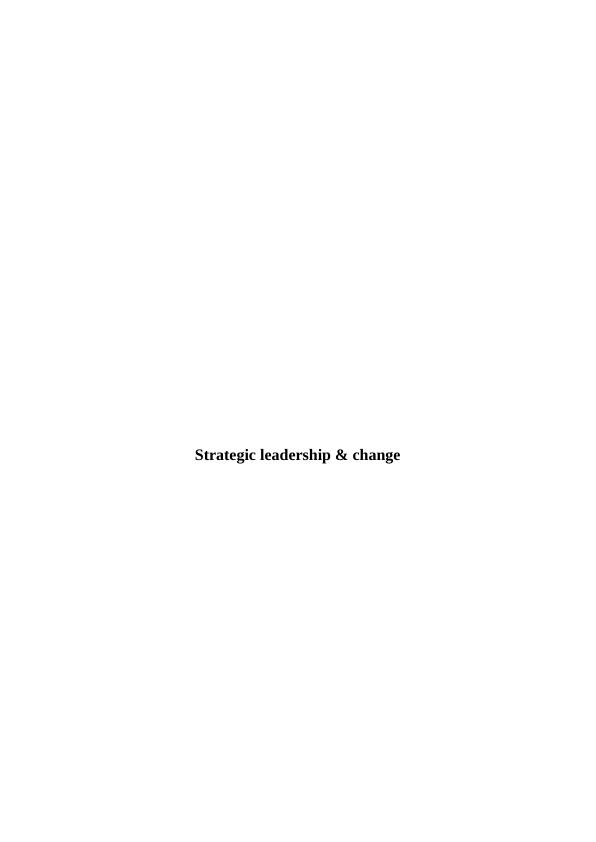
2Table of contentPart A.........................................................................................................................................3Question 1:..............................................................................................................................3Question 2:..............................................................................................................................4Question 3:..............................................................................................................................6Question 4:..............................................................................................................................7Question 5:..............................................................................................................................9Part B........................................................................................................................................11Abstract....................................................................................................................................11Introduction..............................................................................................................................11Leadership qualities utilize to increase employee's performance............................................12Leadership styles utilized with 38 employee's difficulties along with justification.................13Change strategies, along with the reason for improvements, conduct.....................................14Strategic thinking and tools utilized to undertake changes swiftly and successfully..............16Strategies utilized to ensure effective and efficient selection..................................................17Recommendations....................................................................................................................18Conclusion................................................................................................................................19Reference list............................................................................................................................20
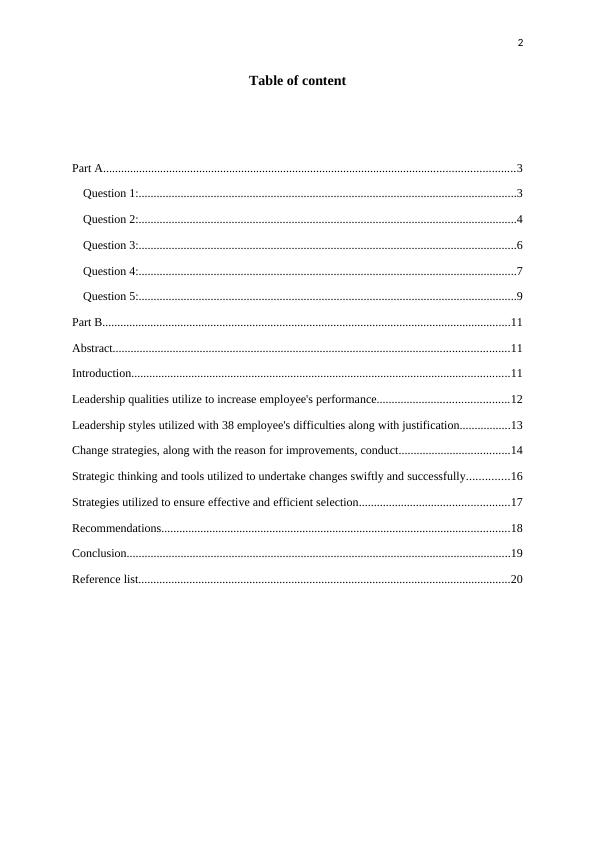
3Part AQuestion 1:Leadership is an individual's ability to motivate and influence others to extract the best out oftheir team members. It deliberately collaborates with encouraging individuals to leveragelarger to the overall effectiveness of the enterprise. An organization's leadership interactswith developing its members, which in return helps them attain their final potential. In otherwords, leadership executes to motivate its people to enrich towards attaining the commongoal. However, good leadership relates to behavioural characteristics and emotionalstrengths, which deeply affect the leader's spiritual and mental reserves. Regarding this,below promote leadership qualities required as the CEO of large UAE organizations in thehealthcare sector.Qualities required for a successful relationship between leaders and their members includestrong communication skills, strategic decision-making, Empathy, time management, andcustomer-first orientation.Strong communication skills: The existing dynamic healthcare practise depends on highlymotivated and educated leaders who possess effective managerial expertise. One specific wayto explore the leader's success is to observe how well they collaborate or communicate withtheir colleagues within the hospital's premises. Strong communication skills comprisenonverbal and listening communication, promoting leaders with the development of personalrelationships with compassion and kindness. Examples of strong communication quality ofleaders include conducting medical interviews with patients, carefully listening to patientsand always maintaining eye contact.Strategic decision-making: A good leader requires interacting and making diverse decisionsdaily, which impacts their members. Undertaking a strategic decision-making processpromotes the ability to withstand potential outcomes on the existing workforces to maintainthe needs of healthcare as a whole. Individuals who hold these stages must be ready toanalyze and gather statistical data and information from others, even through third-partyconsultants. For example, sorting out the problems of employees within their teams withoutescalating the challenge reflects the leader's ability to incorporate strategic decision-makingquality (Budak, 2017).

4Empathy: As refers by Strömgren et al. (2017), Empathy is depicted as a valuable tool forhelping others to feel appreciated and understood truly. For healthcare leaders whodemonstrate a connecting habit with their employees, Empathy requires practice at everylevel. Healthcare leaders must practice Empathy on specific levels but need to encourageothers within their premises. For instance, modelling requires behaviours in front of membersto encourage others, such as employees and managers alike.Time-management: A successful leader must understand when to delegate continuous tasksthat constitute more time to collaborate, such as helping hospitals implement new technology,like automated on-call physician schedules. As mentioned by Tau et al. (2018), performingfunctions manually within the hectic healthcare environment can promote timeliness andaccuracy of updates to the call schedule. Under automated on-call scheduling systems,effective time management can be possible. Moreover, it also ensures hospitals reflect on theactual process of hand-patient care.Customer-first oriented: Being a high-risk and fast-paced industry, every decision in concernto healthcare practitioners reflects work processes that impact patients' potential and well-being. A successful leader is exerted within the negative environment without developingadditional stress by impulsively reactive. Through a customer-first approach, leaders shouldencourage employees to actively share information, ideas, perspectives, and reaction whilelistening. It promotes open-mindedness and respect signals, and a continuous growthcommitment. For instance, healthcare leaders require designing solutions to attain customerson their regulations by considering' outside-in' viewpoints (Tau et al., 2018).Question 2:Leadership style comprises the leader's characteristic behaviours when guiding, directing,managing, and motivating diverse groups of people. Following a specific leadership style, aleader motivates others to create, innovate and perform. The classification of leadership stylesreflects how a person within the construction company of the UAE behaves while leading itsmembers. Regarding this, the three diverse leadership styles which can be deliberately utilized in theconstruction company of the UAE is provided below, along with specific examples:
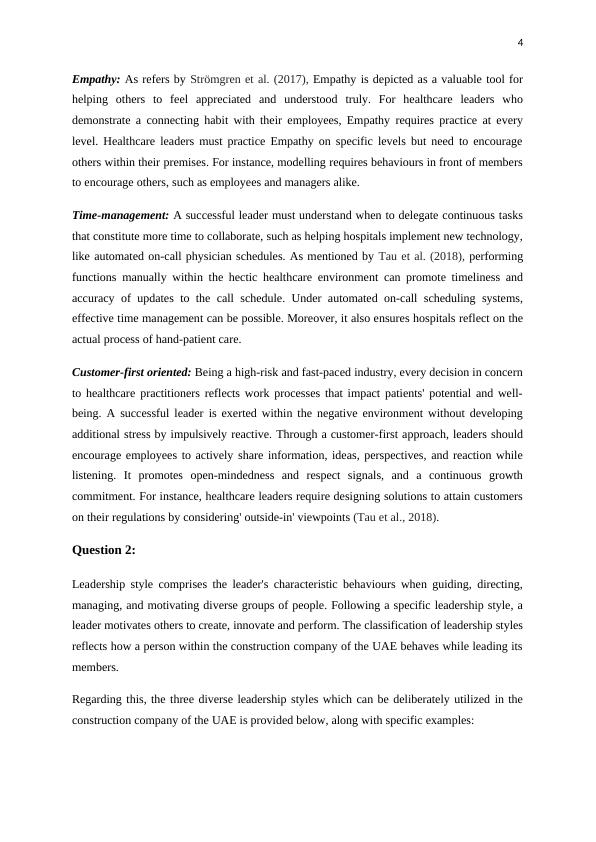
5Autocratic leadership: Autocratic leadership depends on coercion, while its style isarbitrariness, compliance, paternalism and command. As suggested by Dyczkowska &Dyczkowski (2018), the autocratic leaders promote orders which are required to bedeliberately obeyed and considered by their subordinates. By following autocratic leadership,leaders explore particular policies for the group without providing detailed informationrelated to the plans and consulting them. Rather tells the team to interact with their immediatesteps. Following this leadership style, the effective decisions speed can be ascertained whichthe leader cannot appropriately undertake approval from the group members' before deciding.However, certain autocratic leaders collaborate in the form of "benevolent autocrats".Generally, they are willing to consider and hear subordinates' suggestions and ideas, but theyreflect more autocratic than benevolent whenever the decision is made. For instance, themarketing campaigns of hotels undertake as the commanding intent sovereign in the contextof Leona Helmsley for Helmsley hotels. This similar mentality can be ascertained within thedaily management work of the UAE's construction company. Participative or democratic leadership: The leadership style that utilized legitimatepossession and power can be appropriately referred to as democratic leadership. Participativeleadership usually promotes instructions and guidelines only after specifically consulting withtheir team members. Doing so reflects those policies that can be worked out in the form ofparticular group discussions and with the accepted measure of the group. Moreover, it alsohelps to withstand leadership solicits respecting and participating in their opinions. There areseveral benefits of utilizing this leadership, such as influencing the employees' morale,increasing acceptance of the management's perception, increasing cooperation betweenemployees and management, and reducing the number of grievances and complaints. In termsof example, democratic or participative leadership include facilitators, who seek to compriseeveryone within the process to form their collective conclusions through collaboration anddialogue (Dyczkowska & Dyczkowski, 2018). Besides, facilitators may interact with othertechniques to associate with the leadership styles, including group boundaries defining oranalyzing the group process. Laissez-Faire or Free-Rein leadership: This type of leadership style promotes maximumfreedom to their diverse followers. A laissez-faire leadership abdicates completely towardsthe leadership position to promote all work entrusted responsibility within the group to limitand lead their authority to execute the group contact with the persons outside the group. By
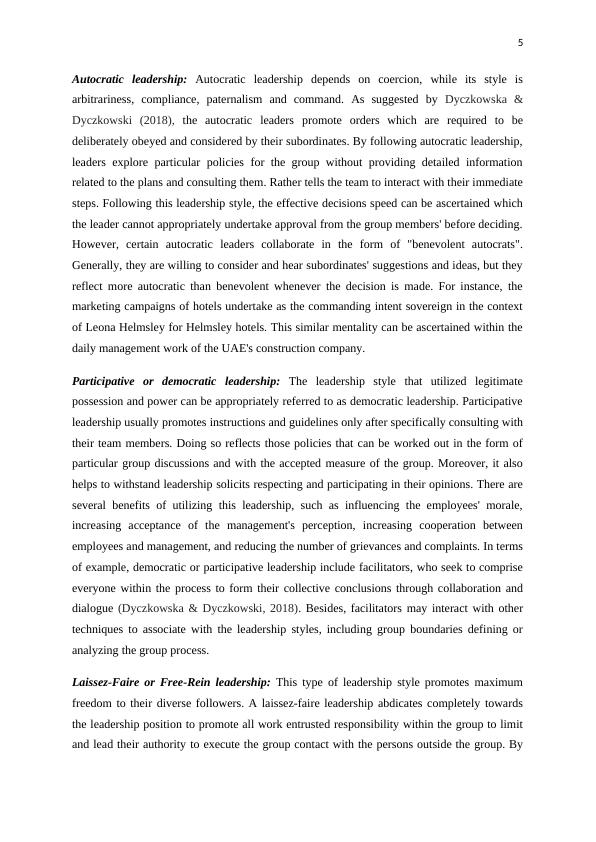
6implementing this leadership style, leaders can promote employees with high independencewithin their existing operation session. Moreover, it also promotes individuals to develop inaccordance with what is offered to every group member. For instance, supervisors andleaders can stand back and let their existing employees be involved with demonstratingdecisions to reflect their own set of deadlines (Ardana, Astariani & Sudika, 2020).Additionally, it also neglects to offer much feedback to one another within the constructionpremises. Question 3:In accordance with the identified cooperation issue of the seven difficult people, the operationmanager of the manufacturing company, the operation strategies are considered applicable.The term operational strategies undertake as the specific methods of the manufacturingcompany for the means to attain final objectives or goals. By collaborating with operationalstrategies, the company can involve implementing and examining effective systems tomitigate the issues of the premises using personnel, resources and the work process. Theoperation manager of the manufacturing company also utilized diverse operational strategiesto develop linkage between short- and long-term corporate decisions to undertake an effectiveand successful management team. Regarding this, being an operation manager, the company's selected operational strategies areprovided below to mitigate the current corporate issue.Developing core competencies: Core competencies reflect the resources and strengths withinthe manufacturing company. As core competencies usually vary from business and industry,they can be effectively utilized to neglect the chances of tackling difficult people. Byleveraging core competencies, a company can develop various processes such as productdevelopment, customer satisfaction and demonstrating professional relationships withstakeholders. For instance, being an operation manager of the manufacturing company, thevarious measures of core competencies include optimal business locations, financial andmarketing expertise and well-trained staff.Cross-functional interaction and corporate strategy: The corporate strategies undertaken asa system of interconnected parts of the manufacturing company. Corporate strategy incollaboration with the cross-functional interactions reflects that each department of themanufacturing company depends on one another to stay effective and healthy towards
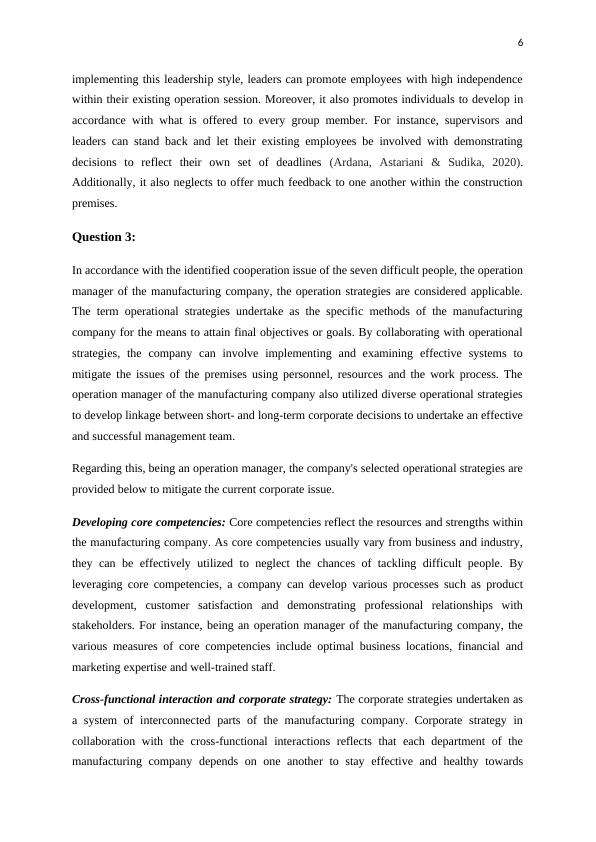
End of preview
Want to access all the pages? Upload your documents or become a member.
Related Documents
Developing Strategic Leadership Skills: Characteristics, Analysis, and Planlg...
|18
|3955
|50
Professionalism, Stewardship, and Leadership in Healthcarelg...
|9
|2138
|53
Nursing Leadership and Vocationlg...
|5
|799
|26
Leadership and Management in Nursing Assignment (Doc)lg...
|11
|3666
|119
Individual Leadershiplg...
|10
|1041
|243
Strategic Leadership in Healthcarelg...
|1
|730
|201